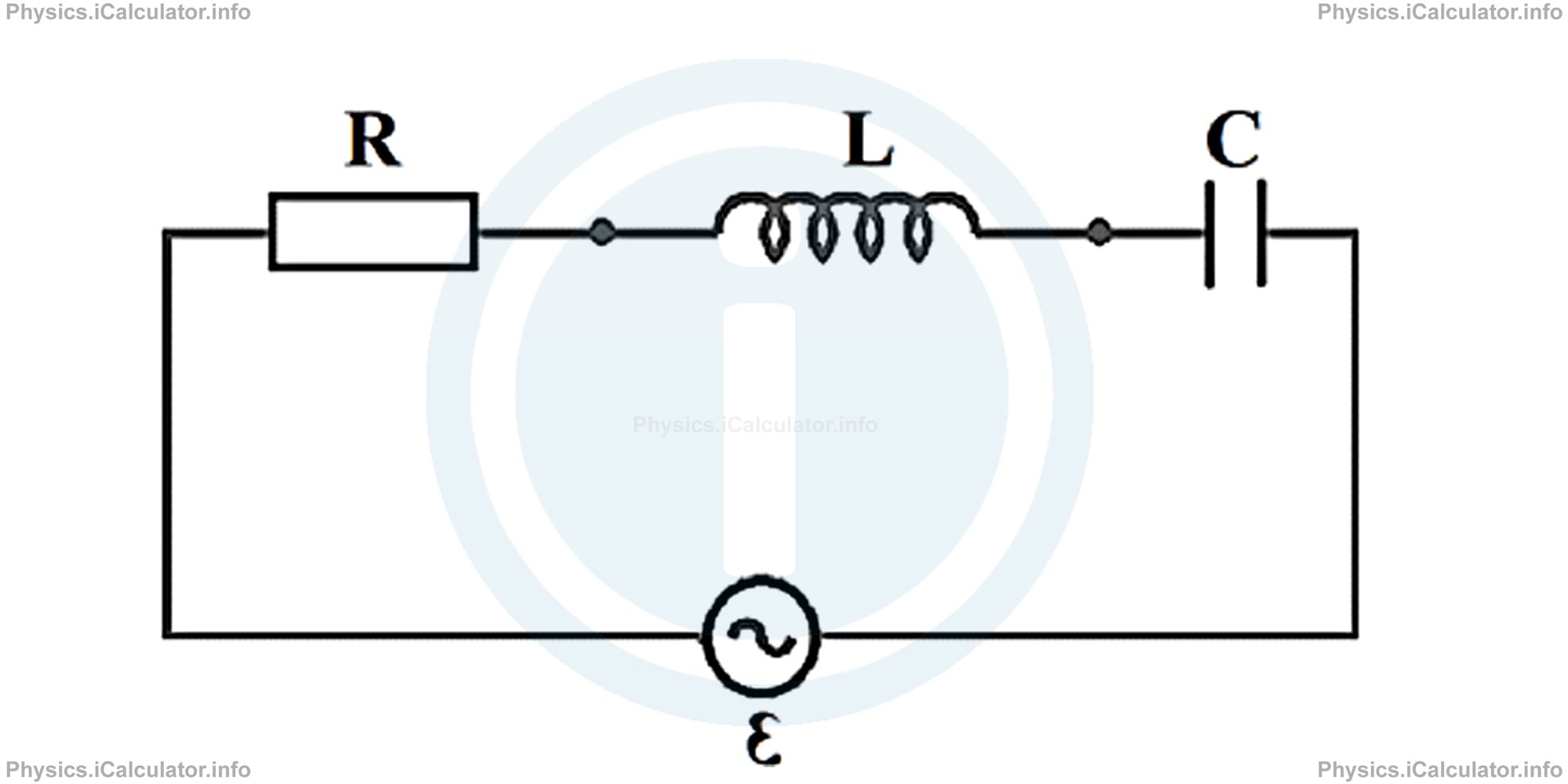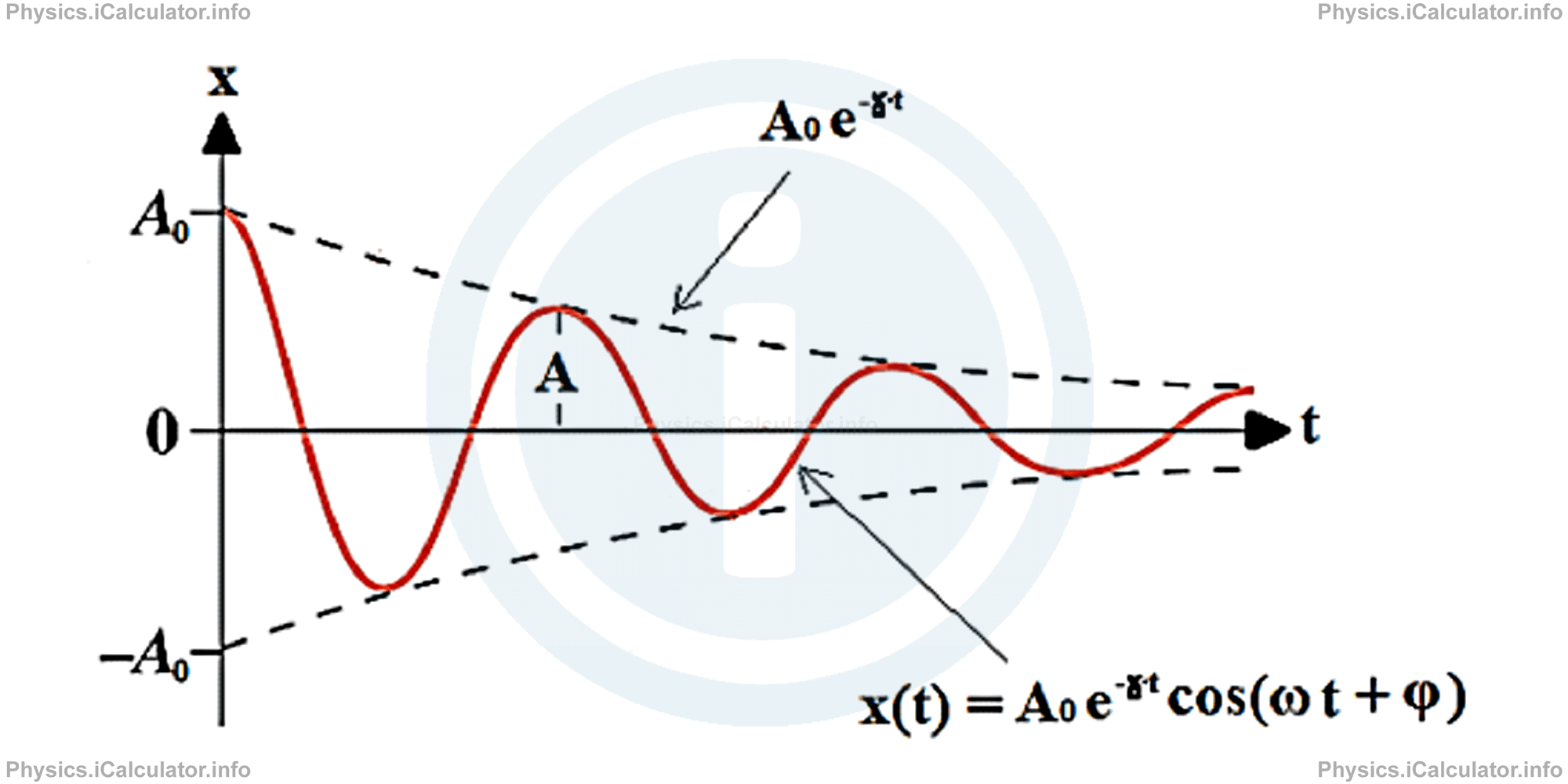Menu
Physics Lesson 16.15.1 - What is a RLC Circuit? Damped Oscillations in a RLC Circuit
Please provide a rating, it takes seconds and helps us to keep this resource free for all to use
Welcome to our Physics lesson on What is a RLC Circuit? Damped Oscillations in a RLC Circuit, this is the first lesson of our suite of physics lessons covering the topic of Introduction to RLC Circuits, you can find links to the other lessons within this tutorial and access additional physics learning resources below this lesson.
What is a RLC Circuit? Damped Oscillations in a RLC Circuit
By definition, a RLC circuit is a circuit that contains at least a resistor, a capacitor and an inductor. The simplest RLC circuits are series RLC circuits, like the one shown in the figure below.

As stated in the previous tutorial, when the resistance of circuit is considered, the total energy (electric plus magnetic) in the circuit does not remain constant but it rather decreases with time as some of this energy converts into thermal energy and is therefore dissipated in the form of heat by the resistor. As a result, the energy in the circuit will decrease after each cycle; the oscillations fade and becomes less visible until they disappear completely.
Due to this decrease in the electromagnetic energy of the system, all related quantities such as current, charge and potential difference will decrease too, as there is a continuous decrease in the amplitude of oscillations. We say the oscillations are damped, exactly as occurs in a real block-and-spring oscillation system, in which the amplitude of oscillations decreases after each cycle because of friction.
In tutorial 10.2 "Energy in Simple Harmonic Oscillations" we have provided a general overview on what damped oscillations are. Let's recall a passage from the core paragraph of that tutorial:
"If we make a system oscillate, the amplitude of oscillations would decrease until it becomes zero if energy is not provided continuously to the system. In this case, the oscillations fade away with time. Such oscillations are known as damped oscillations the amplitude of which decreases with time. Look at the graph below. ,/i>

The "envelope" that surrounds the graph of damped oscillations represents a decreasing exponential function of the form x(t) = A0 ∙ e-γ ∙ t where A0 is the initial amplitude and γ is a constant. Despite the amplitude decreases with time, this is still a simple harmonic motion because the other quantities such as period and frequency remain unchanged. This kind of SHM has the equation
On the other hand, in sustainable SHM, the amplitude of oscillations does not change with time. The envelope shows a horizontal function of the type x(t) = A0."
In the next paragraph, we will see that a RLC circuit without a sustainable energy supply from outside, represents a system of damped oscillations because the energy of system decreases with time. This occurs because part of the total energy of the system converts into thermal energy and is therefore dissipated in the form of heat from the resistor to the environment. This brings a continuous decrease in the total energy of the system.
You have reached the end of Physics lesson 16.15.1 What is a RLC Circuit? Damped Oscillations in a RLC Circuit. There are 4 lessons in this physics tutorial covering Introduction to RLC Circuits, you can access all the lessons from this tutorial below.
More Introduction to RLC Circuits Lessons and Learning Resources
Whats next?
Enjoy the "What is a RLC Circuit? Damped Oscillations in a RLC Circuit" physics lesson? People who liked the "Introduction to RLC Circuits lesson found the following resources useful:
- Definition Feedback. Helps other - Leave a rating for this definition (see below)
- Magnetism Physics tutorial: Introduction to RLC Circuits. Read the Introduction to RLC Circuits physics tutorial and build your physics knowledge of Magnetism
- Magnetism Revision Notes: Introduction to RLC Circuits. Print the notes so you can revise the key points covered in the physics tutorial for Introduction to RLC Circuits
- Magnetism Practice Questions: Introduction to RLC Circuits. Test and improve your knowledge of Introduction to RLC Circuits with example questins and answers
- Check your calculations for Magnetism questions with our excellent Magnetism calculators which contain full equations and calculations clearly displayed line by line. See the Magnetism Calculators by iCalculator™ below.
- Continuing learning magnetism - read our next physics tutorial: The Series RLC Circuit
Help others Learning Physics just like you
Please provide a rating, it takes seconds and helps us to keep this resource free for all to use
We hope you found this Physics lesson "Introduction to RLC Circuits" useful. If you did it would be great if you could spare the time to rate this physics lesson (simply click on the number of stars that match your assessment of this physics learning aide) and/or share on social media, this helps us identify popular tutorials and calculators and expand our free learning resources to support our users around the world have free access to expand their knowledge of physics and other disciplines.
Magnetism Calculators by iCalculator™
- Angular Frequency Of Oscillations In Rlc Circuit Calculator
- Calculating Magnetic Field Using The Amperes Law
- Capacitive Reactance Calculator
- Current In A Rl Circuit Calculator
- Displacement Current Calculator
- Electric Charge Stored In The Capacitor Of A Rlc Circuit In Damped Oscillations Calculator
- Electric Power In A Ac Circuit Calculator
- Energy Decay As A Function Of Time In Damped Oscillations Calculator
- Energy Density Of Magnetic Field Calculator
- Energy In A Lc Circuit Calculator
- Faradays Law Calculator
- Frequency Of Oscillations In A Lc Circuit Calculator
- Impedance Calculator
- Induced Emf As A Motional Emf Calculator
- Inductive Reactance Calculator
- Lorentz Force Calculator
- Magnetic Dipole Moment Calculator
- Magnetic Field At Centre Of A Current Carrying Loop Calculator
- Magnetic Field In Terms Of Electric Field Change Calculator
- Magnetic Field Inside A Long Stretched Current Carrying Wire Calculator
- Magnetic Field Inside A Solenoid Calculator
- Magnetic Field Inside A Toroid Calculator
- Magnetic Field Produced Around A Long Current Carrying Wire
- Magnetic Flux Calculator
- Magnetic Force Acting On A Moving Charge Inside A Uniform Magnetic Field Calculator
- Magnetic Force Between Two Parallel Current Carrying Wires Calculator
- Magnetic Potential Energy Stored In An Inductor Calculator
- Output Current In A Transformer Calculator
- Phase Constant In A Rlc Circuit Calculator
- Power Factor In A Rlc Circuit Calculator
- Power Induced On A Metal Bar Moving Inside A Magnetic Field Due To An Applied Force Calculator
- Radius Of Trajectory And Period Of A Charge Moving Inside A Uniform Magnetic Field Calculator
- Self Induced Emf Calculator
- Self Inductance Calculator
- Torque Produced By A Rectangular Coil Inside A Uniform Magnetic Field Calculator
- Work Done On A Magnetic Dipole Calculator